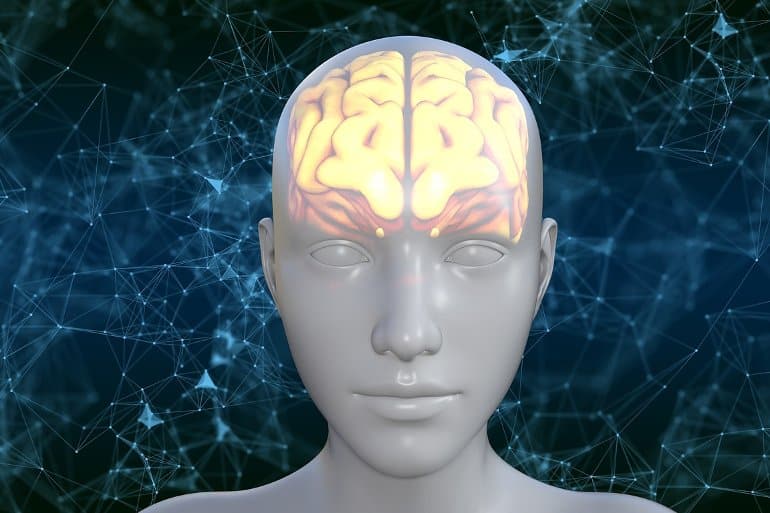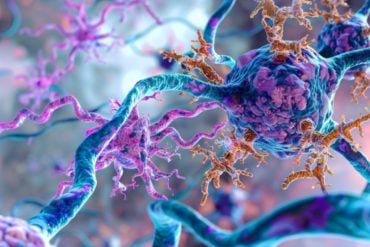Summary: A new study reports human brain size decreased in size approximately 3,000 years ago, and the brain shrinkage parallels the expansion of collective intelligence in human societies.
Source: Frontiers
The brain is the most complex organ in the human body. Now, a new study has brought us closer to understanding some of its evolution. It shows that human brains decreased in size approximately 3,000 years ago. By studying ants as models to illustrate why brains may increase or decrease in size, the researchers hypothesize that brain shrinkage parallels the expansion of collective intelligence in human societies.
Studying and understanding the causes and consequences of brain evolution helps us understand the nature of humanity. It is well documented that human brains have increased in size over the course of our evolutionary history. Less appreciated is the fact that human brains have decreased in size since the Pleistocene. When exactly these changes happened, or why, was not well known.
“A surprising fact about humans today is that our brains are smaller compared to the brains of our Pleistocene ancestors. Why our brains have reduced in size has been a big mystery for anthropologists,” explained co-author Dr Jeremy DeSilva, from Dartmouth College.
To disentangle this mystery, a team of researchers from different academic fields set out to study the historical patterns of human brain evolution, comparing their findings with what is known in ant societies to offer broad insights.
“A biological anthropologist and a behavioral ecologist and evolutionary neurobiologist began sharing their thoughts on brain evolution and found bridging research on humans and ants might help identify what is possible in nature,” said co-author Dr James Traniello, from Boston University.
Their paper, published in Frontiers in Ecology and Evolution, sheds new light on the evolution of our brain.
A recent size decrease
The researchers applied a change-point analysis to a dataset of 985 fossil and modern human crania. They found that human brains increased in size 2.1m years ago and 1.5m years ago, during the Pleistocene, but decreased in size around 3,000 years ago (Holocene), which is more recent than previous estimates.
“Most people are aware that humans have unusually large brains – significantly larger than predicted from our body size. In our deep evolutionary history, human brain size dramatically increased,” said Traniello. “The reduction in human brain size 3,000 years ago was unexpected.”
The timing of size increase coincides with what is previously known about the early evolution of Homo and the technical advancements that led to, for example, better diet and nutrition and larger social groups.
As for the decrease in brain size, the interdisciplinary team of researchers propose a new hypothesis, finding clues within ant societies.
What could ants teach us about human brain evolution?
“We propose that ants can provide diverse models to understand why brains may increase or decrease in size due to social life. Understanding why brains increase or decrease is difficult to study using only fossils,” explained Traniello.

Studying computational models and patterns of worker ant brain size, structure, and energy use in some ant clades, such as the Oecophylla weaver ant, Atta leafcutter ants, or the common garden ant Formica, showed that group-level cognition and division of labor may select for adaptive brain size variation. This means that within a social group where knowledge is shared or individuals are specialists at certain tasks, brains may adapt to become more efficient, such as decreasing in size.
“Ant and human societies are very different and have taken different routes in social evolution,” Traniello said. “Nevertheless, ants also share with humans important aspects of social life such as group decision-making and division of labor, as well as the production of their own food (agriculture). These similarities can broadly inform us of the factors that may influence changes in human brain size.”
Brains use up a lot of energy, and smaller brains use less energy. The externalization of knowledge in human societies, thus needing less energy to store a lot of information as individuals, may have favored a decrease in brain size.
“We propose that this decrease was due to increased reliance on collective intelligence, the idea that a group of people is smarter than the smartest person in the group, often called the ‘wisdom of the crowds’”, added Traniello.
DeSilva concluded: “We look forward to having our hypothesis tested as additional data become available.”
About this evolutionary neuroscience research news
Author: Suzanna Burgelman
Source: Frontiers
Contact: Suzanna Burgelman – Frontiers
Image: The image is in the public domain
Original Research: Open access.
“When and Why Did Human Brains Decrease in Size? A New Change-Point Analysis and Insights From Brain Evolution in Ants” by Jeremy DeSilva et al. Frontiers in Ecology and Evolution
Abstract
When and Why Did Human Brains Decrease in Size? A New Change-Point Analysis and Insights From Brain Evolution in Ants
Human brain size nearly quadrupled in the six million years since Homo last shared a common ancestor with chimpanzees, but human brains are thought to have decreased in volume since the end of the last Ice Age. The timing and reason for this decrease is enigmatic. Here we use change-point analysis to estimate the timing of changes in the rate of hominin brain evolution.
We find that hominin brains experienced positive rate changes at 2.1 and 1.5 million years ago, coincident with the early evolution of Homo and technological innovations evident in the archeological record. But we also find that human brain size reduction was surprisingly recent, occurring in the last 3,000 years. Our dating does not support hypotheses concerning brain size reduction as a by-product of body size reduction, a result of a shift to an agricultural diet, or a consequence of self-domestication.
We suggest our analysis supports the hypothesis that the recent decrease in brain size may instead result from the externalization of knowledge and advantages of group-level decision-making due in part to the advent of social systems of distributed cognition and the storage and sharing of information.
Humans live in social groups in which multiple brains contribute to the emergence of collective intelligence. Although difficult to study in the deep history of Homo, the impacts of group size, social organization, collective intelligence and other potential selective forces on brain evolution can be elucidated using ants as models.
The remarkable ecological diversity of ants and their species richness encompasses forms convergent in aspects of human sociality, including large group size, agrarian life histories, division of labor, and collective cognition. Ants provide a wide range of social systems to generate and test hypotheses concerning brain size enlargement or reduction and aid in interpreting patterns of brain evolution identified in humans.
Although humans and ants represent very different routes in social and cognitive evolution, the insights ants offer can broadly inform us of the selective forces that influence brain size.







